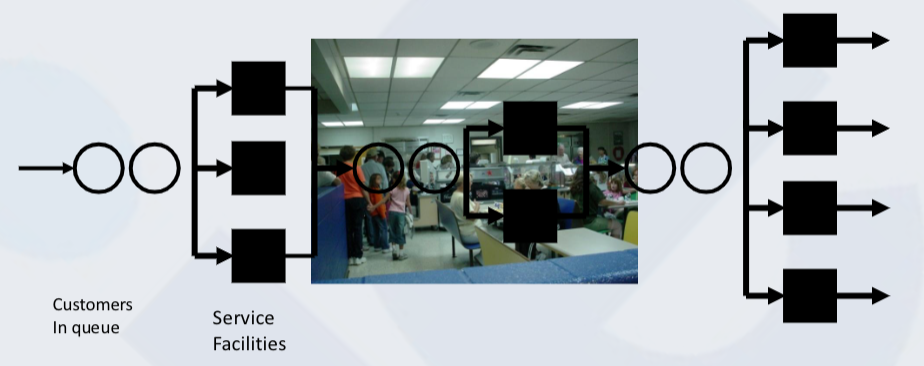Queuing theory
1/30
There's no tags or description
Looks like no tags are added yet.
Name | Mastery | Learn | Test | Matching | Spaced |
|---|
No study sessions yet.
31 Terms
The mathematical study of waiting lines, or queues.
queue lenghts and waiting times can be predicted
Why is queueing theory important ?
Capacity problems are very common in industry and one of the main drivers of process redesign
Queueing and waiting time analysis is particularly important in service systems
Model Queuing system
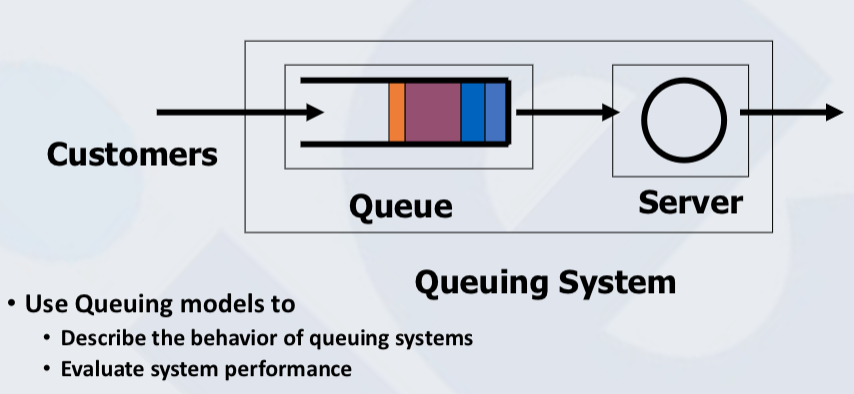

Many assumptions are not always true, but queuing theory gives good results anyway
Assumptions:
Independent arrivals
Exponential distributions
Customers do not leave or change queues.
Large queues do not discourage customers.
Components of a Basic Queuing Process
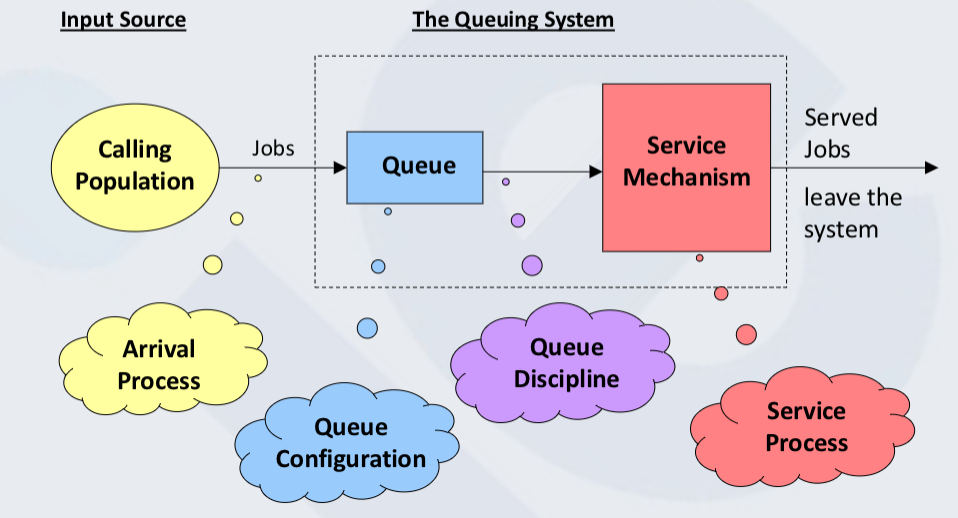
The rule determining the order in which customers are served from the queue.
• How are jobs / customers selected from the queue for service?
- First Come First Served (FCFS)
- Shortest Processing Time (SPT)
- Earliest Due Date (EDD)
- Priority (jobs are in different priority classes)
• FCFS default assumption for most models
The pattern in which customers or jobs arrive at the queueing system.
Distribution of arrival times ?
Batch arrivals ?
Finite population ?
Finite queue length ?
The population of potential customers or jobs that can join the queue.
Size can be finite or infinite
can be homogenous (only one type of customer/jobs)
or heterogenous (Several ≠ kinds of customers/jobs)
Service Process
How long does it take to service a job or costumer ?
Distribution of arrival times?
Rework or repair?
Service center (machine) breakdown?
Exponential service times often assume
Works well for maintenance or unscheduled service situations
Numbers of Servers
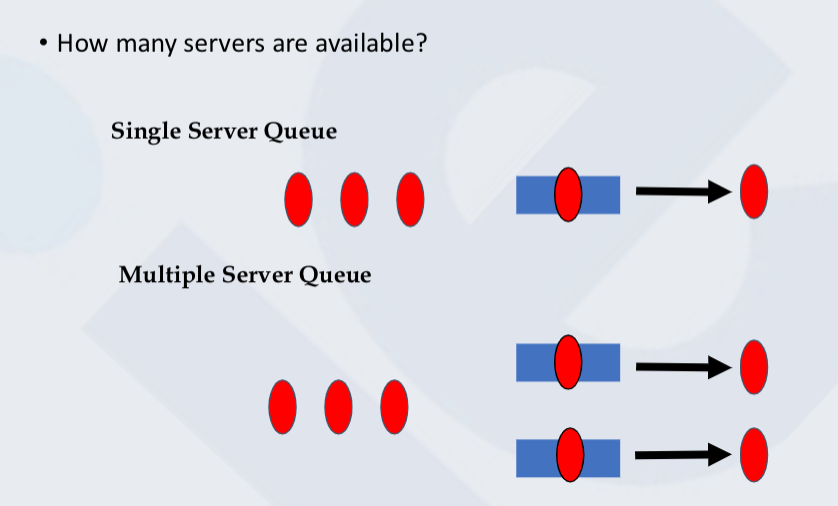
Multiple vs Single Customer Queue Configuration
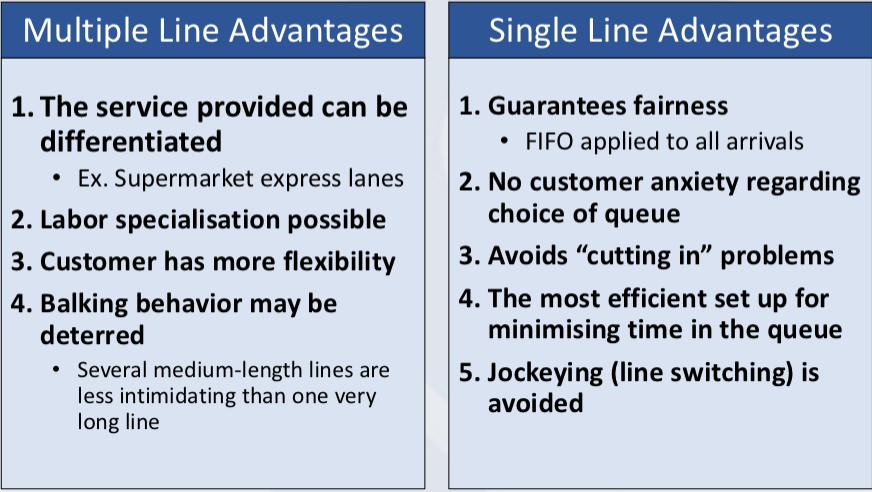
Processor Sharing
Customers are served equally. Network capacity is shared between customers and they all effectively experience the same delay
Single server Single stage Queue

Multiple server Single stage Queue
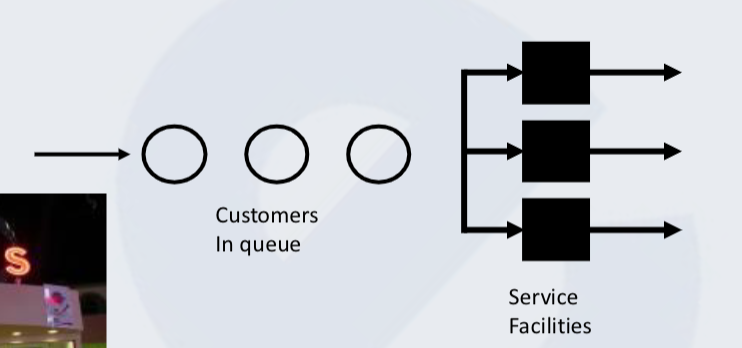
Single server Multiple stage Queue

Multiple server Multiple stage Queue
